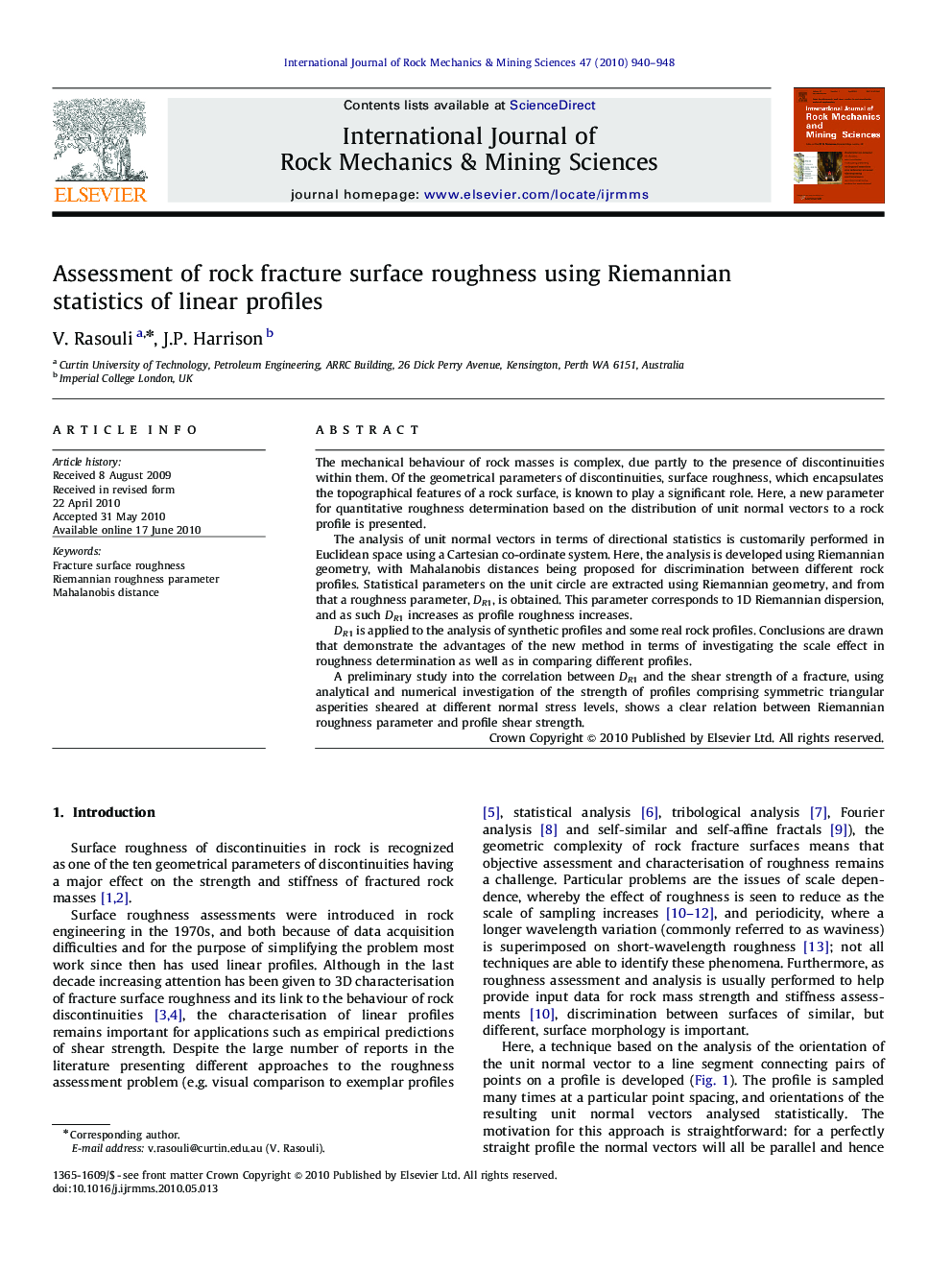| Article ID | Journal | Published Year | Pages | File Type |
|---|---|---|---|---|
| 810155 | International Journal of Rock Mechanics and Mining Sciences | 2010 | 9 Pages |
The mechanical behaviour of rock masses is complex, due partly to the presence of discontinuities within them. Of the geometrical parameters of discontinuities, surface roughness, which encapsulates the topographical features of a rock surface, is known to play a significant role. Here, a new parameter for quantitative roughness determination based on the distribution of unit normal vectors to a rock profile is presented.The analysis of unit normal vectors in terms of directional statistics is customarily performed in Euclidean space using a Cartesian co-ordinate system. Here, the analysis is developed using Riemannian geometry, with Mahalanobis distances being proposed for discrimination between different rock profiles. Statistical parameters on the unit circle are extracted using Riemannian geometry, and from that a roughness parameter, DR1, is obtained. This parameter corresponds to 1D Riemannian dispersion, and as such DR1 increases as profile roughness increases.DR1 is applied to the analysis of synthetic profiles and some real rock profiles. Conclusions are drawn that demonstrate the advantages of the new method in terms of investigating the scale effect in roughness determination as well as in comparing different profiles.A preliminary study into the correlation between DR1 and the shear strength of a fracture, using analytical and numerical investigation of the strength of profiles comprising symmetric triangular asperities sheared at different normal stress levels, shows a clear relation between Riemannian roughness parameter and profile shear strength.
